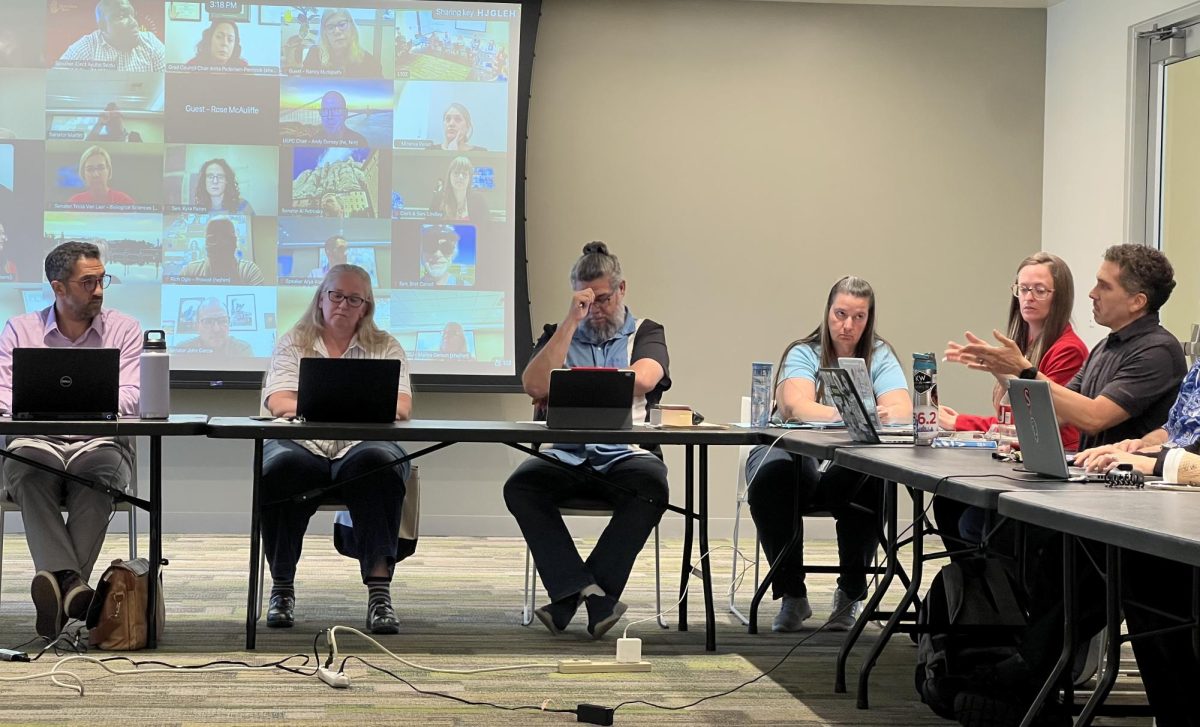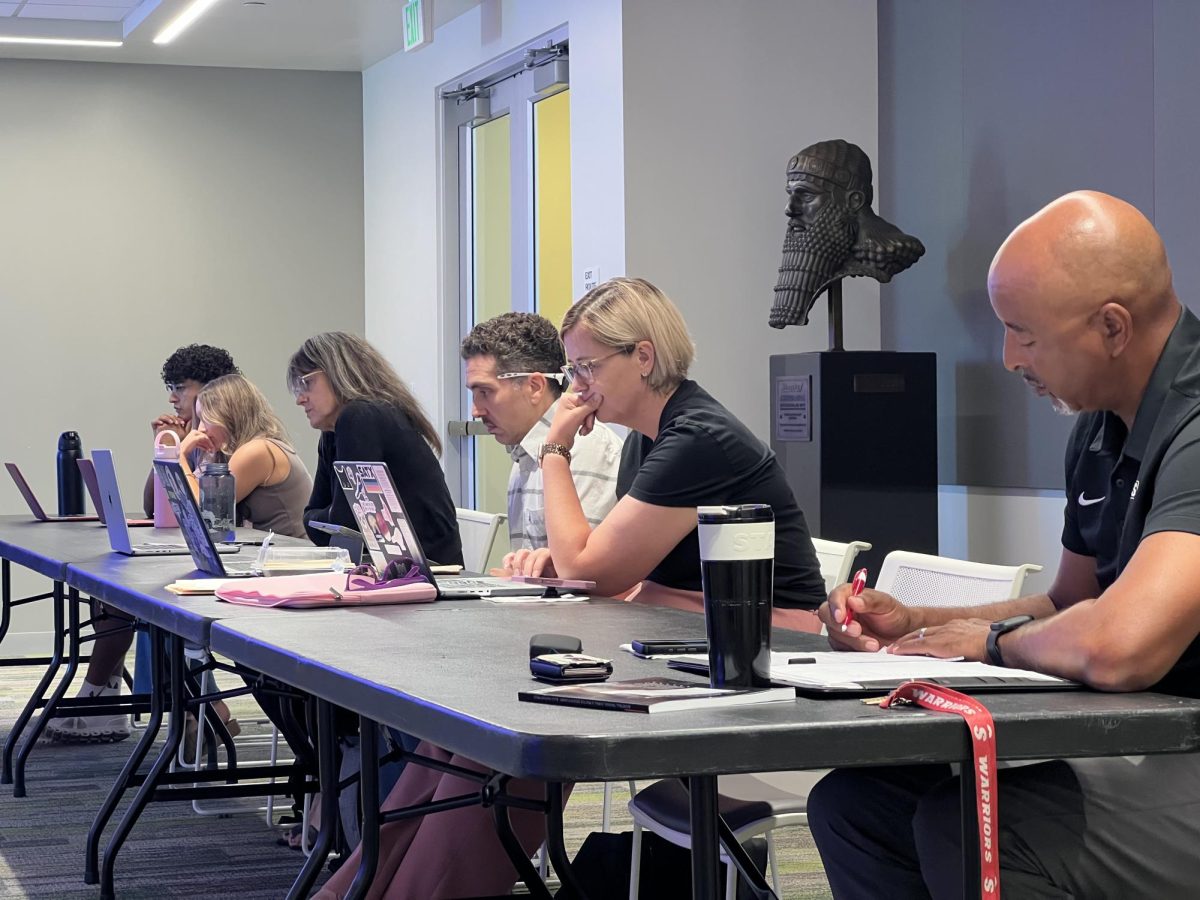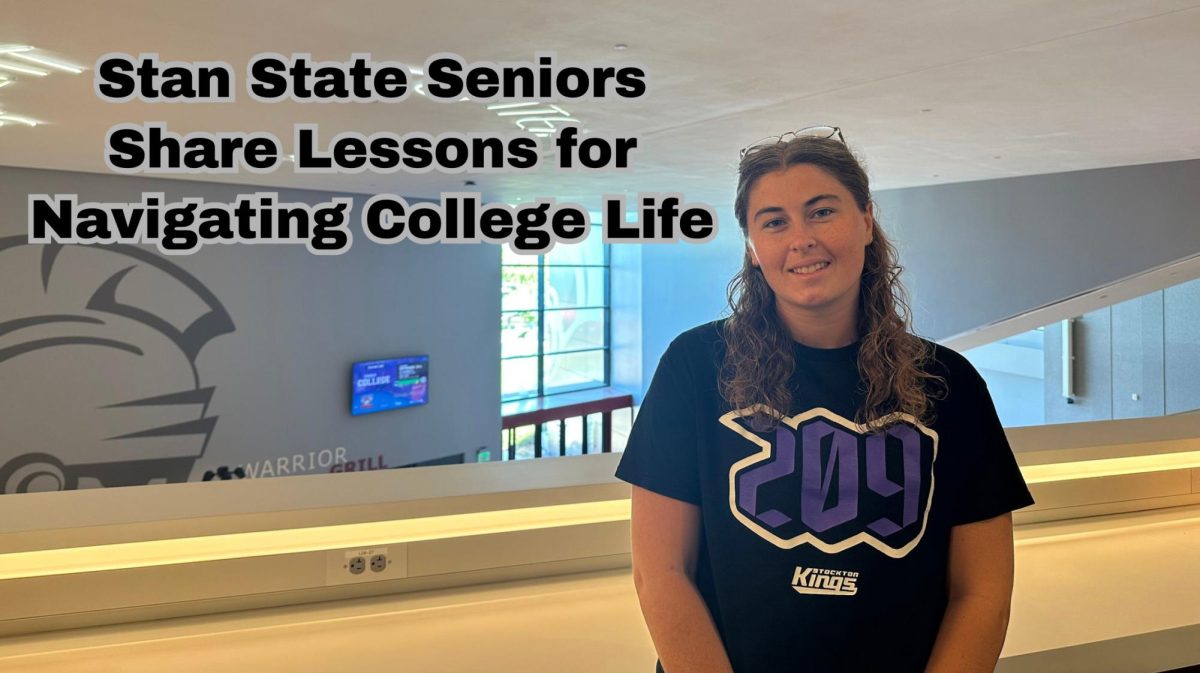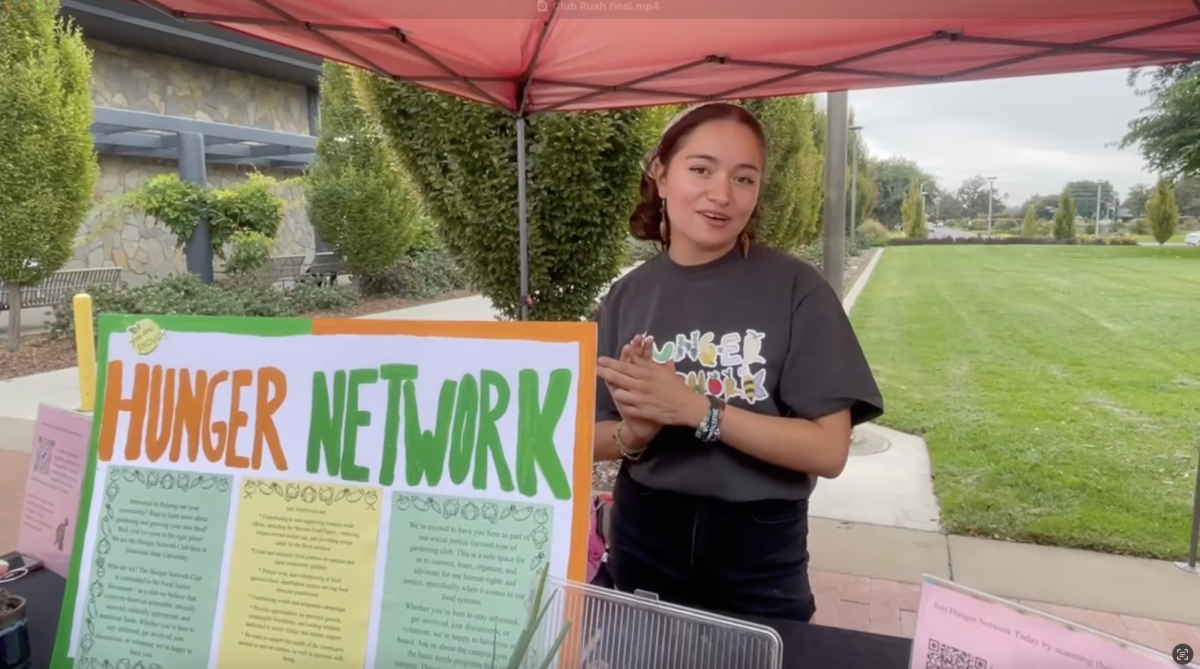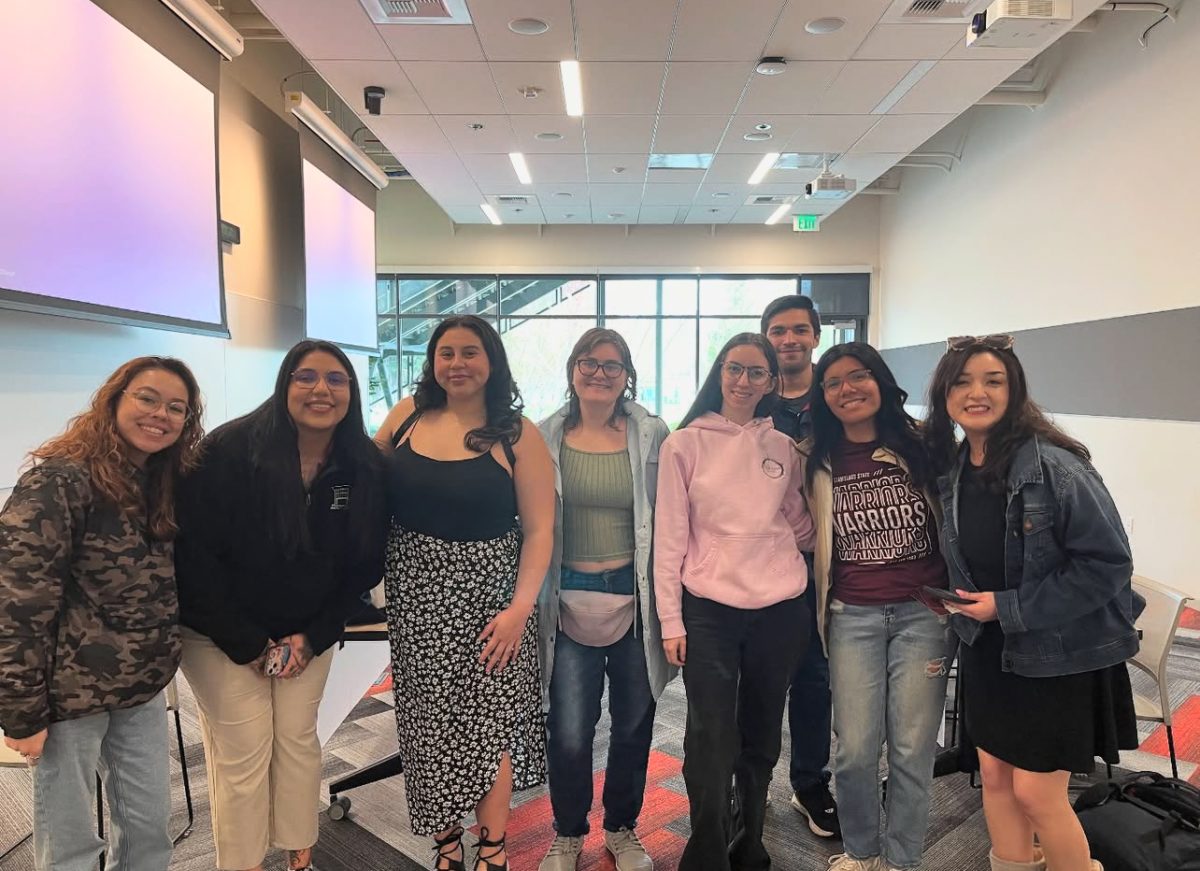The Stan State Writing Center is a helpful resource for many students, which should not be overlooked during distance learning. It is rare that a career does not involve writing in some manner, and even more rare that writing does not factor into one’s daily life. So whether you’re a freshman or a senior on your way out, the tutors at the Writing Center are here to help you excel in your classes and beyond.
About the Writing Center
The Writing Center and Stan State’s writing program have always collaborated closely. Writing Center Director of 16 years Paula Barrington-Schmidt says, “For students who want the additional support, we’ve had a workshop component in some of our first year courses. It’s now with our 1006-1007 course where we are working weekly with the students.”
They have also added first-year experience, which includes study skills, time management, registration and careers. Barrington-Schmidt states, “We’ve added that to our tutor training so that when students ask our peer tutors about that they feel comfortable talking, and of course they have their own experience.”
The center has also done some work with information literacy and research. “We’ve tried to partner with the library to build our tutors’ abilities in guiding students for research, how to decide what’s credible information and what isn’t,” Barrington-Schmidt said. “Our society at large doesn’t appear able to do that very often and so I feel that it needs to be a crucial part of K-12 education; it certainly has to be integrated into higher ed—and it is, it’s one of our course outcomes for first year composition and so we try to support that in the Writing Center.”
The center places care in having tutors that understand multiple languages and discourses and that acknowledge and value the languages that students come into the center with.
Barrington-Schmidt shares that the team at the Writing Center have updated their mission statement to focus more on diversity and inclusion, and language is where that begins. Barrington-Schmidt states, “We are about informing ‘this is what Edited American English is if you’re not familiar with that discourse, and this is how you have to navigate and negotiate and not put away your other languages or discourse communities but add to it and make it just one more language that you become an expert in.’”
Elizabeth Valera (senior, English, TESOL) says that “There is a sense of connection through the shared challenge of learning how to write in another language that may not be your first language. I personally experienced this as I speak Spanish and English. It is important to remind writers that English does not hold superiority over any other language because it can affect how others view their culture or identity, it is just the language being used in this particular environment.” Fellow tutor Matthew Notary (senior, English, TESOL) adds, “(language learners) all have such strong personal stories and opinions, and I’m glad I can help them better express themselves using English. Their voices deserve to be heard.”
The Transition to Online Learning
In terms of going virtual, Barrington-Schmidt says that for the center, most of it is synchronous. “We’re using Zoom to meet with our writers and then our tutor development workshop. Training the tutors was very different–we’re used to meeting in a room, working around tables, learning from one another. We did some orientation by Zoom, but I realized pretty quickly that everything they would need to learn and understand to be ready for tutoring, there was no way we could have that many Zoom meetings.”
In response to this dilemma, the center developed asynchronous training modules for the tutors to complete.
Barrington-Schmidt says that of the around 52 tutors currently, about half of the tutors have been working 10-15 hours a week on Zoom while the other half has been working less. Notary is currently tutoring around 20 students in groups and a few individuals, adding up to about 15-18 hours per week on average, while Valera is currently working with around 20 writers a week for 10-12 hours per week on average, not including four sessions in which she also helps facilitate ENGL 1006 workshops.
The traffic of the Writing Center has decreased, and Barrington-Schmidt explains that part of that is due to a smaller first-year class. She says the biggest factor, though, is the hours. “The big change was our same-day hours. We used to have in our space a tutor there four hours a day and students could drop in for half an hour. We were not able to replicate that service online and I do think being there physically was part of them seeking our help because we were right there.” However, the center does still have a quick turnaround rate. Barrington-Schmidt says, “If you needed help tomorrow, you could get it. It’s a 24-hour turnaround.”
Writing Advice
When asked for some helpful advice to give writers, Barrington-Schmidt says that it all comes down to just getting started. She says, “Sometimes that is reading and annotating the prompt, just so they get an understanding of what they’re headed for, so even that little annotation gets them moving in the right direction. Start early, approach writing with an open mind. I think a lot of us just have an opinion and we search for information that supports that opinion, and for me good academic writing and good critical thinking requires you to suspend your opinion and read around.”
Notary recommends, “Focus your thesis statement and have your body paragraphs pretty solid before you get stuck on your introduction and conclusion. I also tell writers to do a quick Google search on their topic to see what others are saying about it—this tip usually helps find a focus for scholarly research.”
Tutor and Stan State student Dio Cruz Tirado (senior, English, TESOL) has noticed that one of the common struggles for students is organization. “Oftentimes I’ll have a student come in with great ideas, but they need a bit of help organizing them and developing them into a coherent essay,” she says. “I’ve also had students who need help strengthening their thesis and supporting evidence.”
To solve this struggle, Cruz Tirado has found that outlining is a helpful tool. “It’s helpful to organize your ideas,” she says, “It makes the writing process much easier. I also recommend students to use Owl Purdue or grammarly when they have citation, grammar or punctuation questions.”
Valera shares that she struggles with the beginnings of any piece of writing. “In moments like these, I write from the middle or if I know how I want it to end, I will begin there. I try to remind writers not to stress in the beginning, to write down what they know before they lose their ideas in a moment of stress. Whether in a brainstorming activity on a whiteboard, a bullet list of notes or an entire diagram, it is important to write your thoughts down before something is forgotten.”
Some other writing activities that Valera incorporates include:
-
Freewriting
-
Short prompts
-
Popcorn reading
-
Brainstorming and word lists
-
Creating word banks or diagrams
Anyone can write well, sometimes a little guidance is all they need. Appointments can be made with the center M-Th 8 a.m.-10 p.m., F 8 a.m.-1 p.m. and Sun 12-8 p.m. You can utilize the Writing Center’s skilled tutors by making an appointment with one today.




